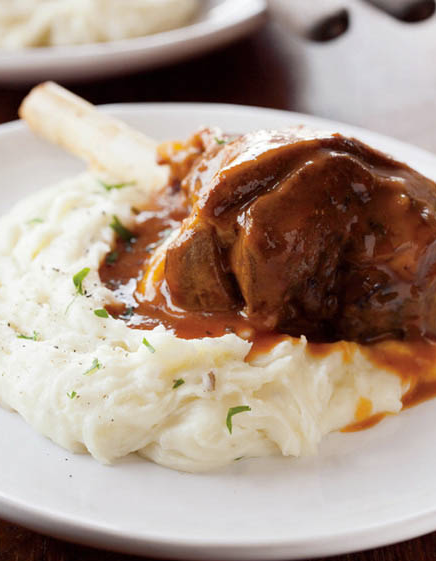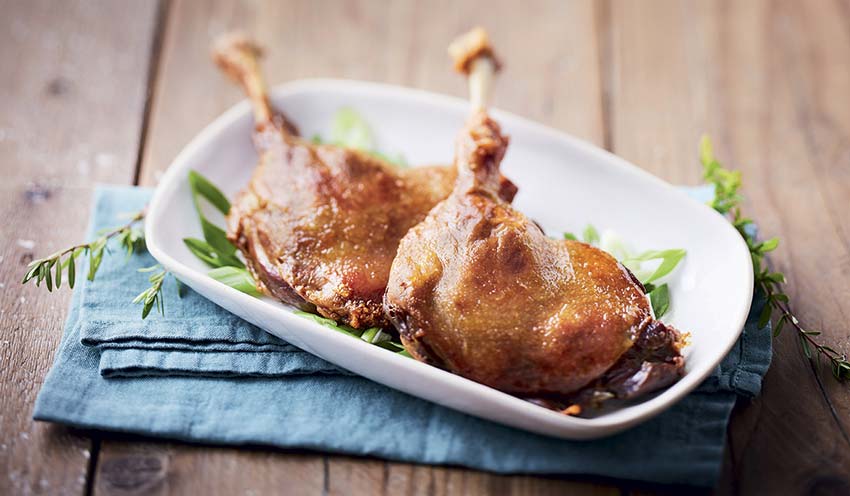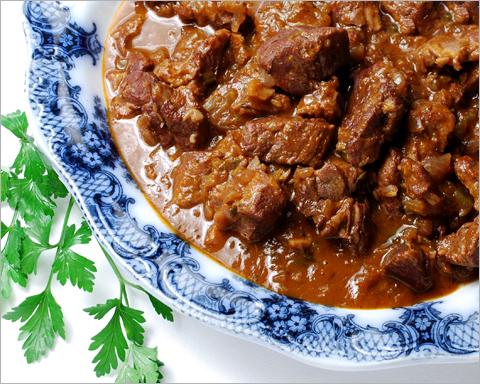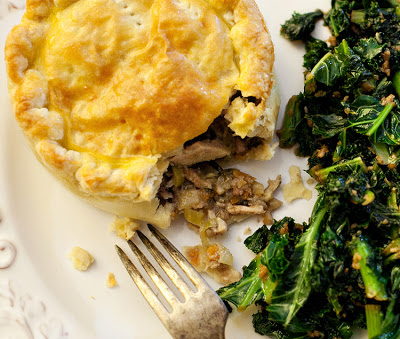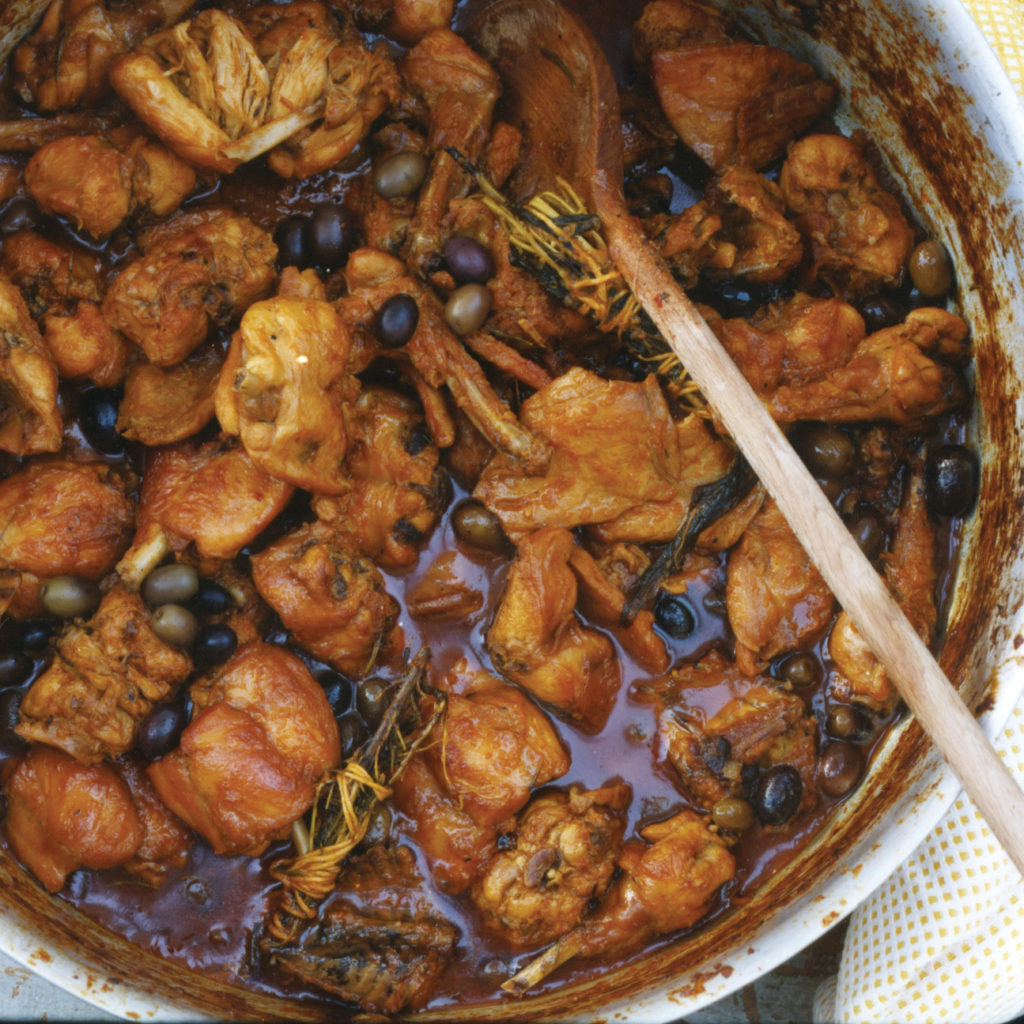Venison with Berry Demi-Glace
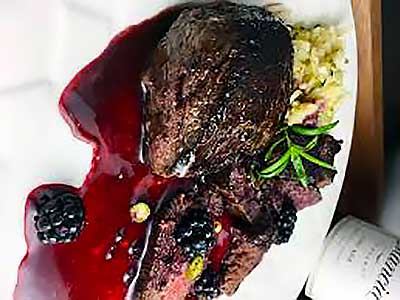 Venison with Berry Demi-Glace
Venison with Berry Demi-Glace
1-2 Caribou/Moose (Venison) Tenderloins
1 T. Salt
1 T. Pepper
1 tsp. all purpose Wildside Seasoning
1 T. Coriander
1 tsp. Cayan Pepper
¼ lb. butter
Thyme or Herb Infused Olive Oil
1 lb. Blackberries, Cherries or Raspberries (depending on availability)
1 cup port wine
1 Qt. veal or beef stock
1 Qt. chicken stock
To make the Demi-Glaze, take veal/beef stock and chicken stock, mix together and reduce by 2/3. A quart of each stock will do. When the stock is reduced add the berries, salt and pepper, a cup of Port wine, and some cayan pepper. Add seasonings to your specific tastes. This process may take up to an hour so be patient. Put the Dem-Glaze aside. Mix the Coriander, sea salt, black pepper, Cayan pepper and Wild Side Seasoning. Take the Caribou Tenderloin and rub the dry seasoning into the tenderloin generously. Heat a cast iron skillet with olive oil and sea salt until smoking hot. Place the tenderloin into the pan and sear all the way around until browned. Place the whole pan with the tenderloins into the oven at 450-500 degrees for 10-12 minutes depending on how rare you like your venison. I prefer very rare, so 10 minutes is plenty of time. Do not make this dish well done or the venison will be dry and tough. Remove from oven and slice into 1 inch slices and place on a plate. Get the Demi-Glaze and spoon generous portions on each side of the tenderloin and drizzle over the top as well.
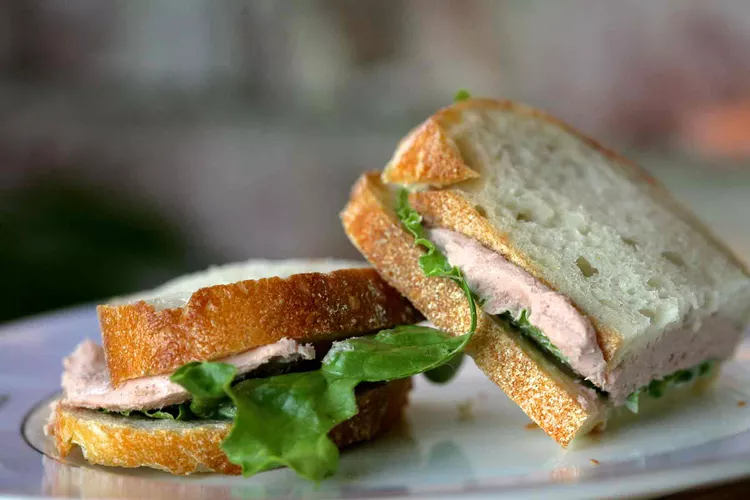 Liverwurst Sandwich Spread
Liverwurst Sandwich Spread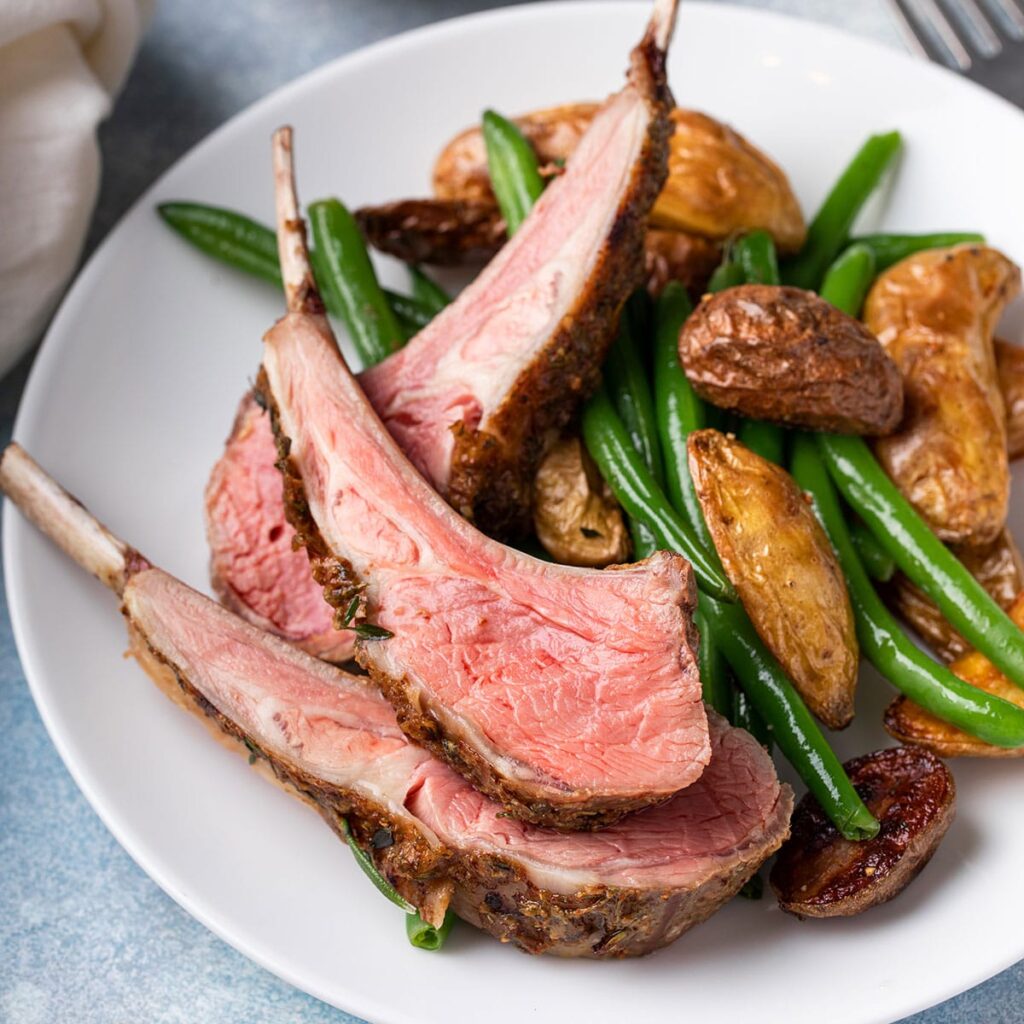 Peruvian Spice Marinated Oregon Lamb Chops
Peruvian Spice Marinated Oregon Lamb Chops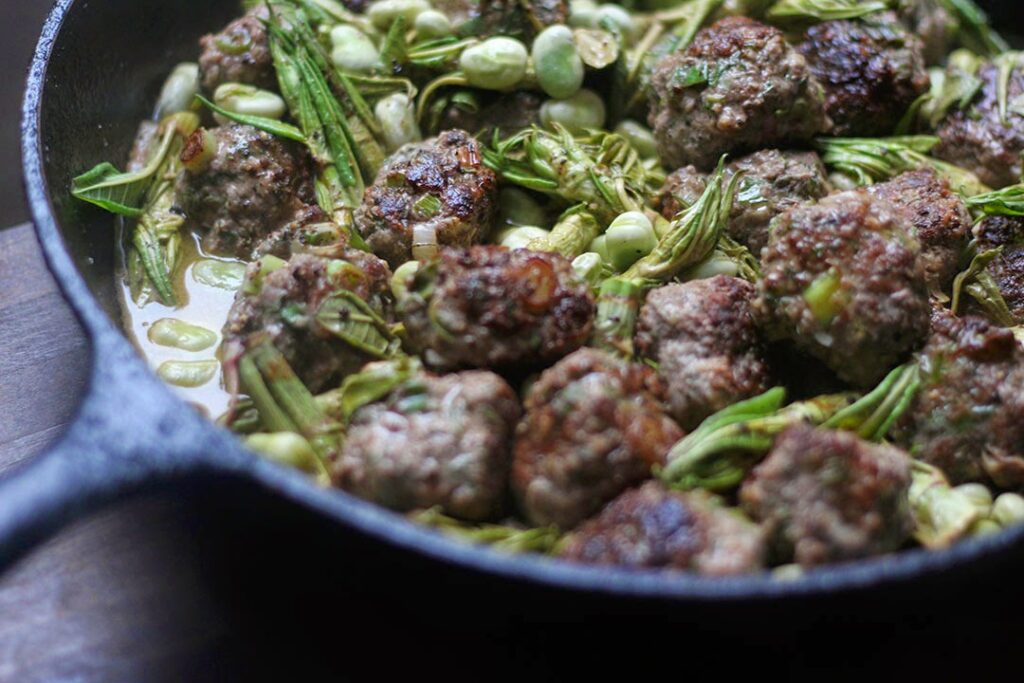 Fava Bean and Knotweed Meatballs
Fava Bean and Knotweed Meatballs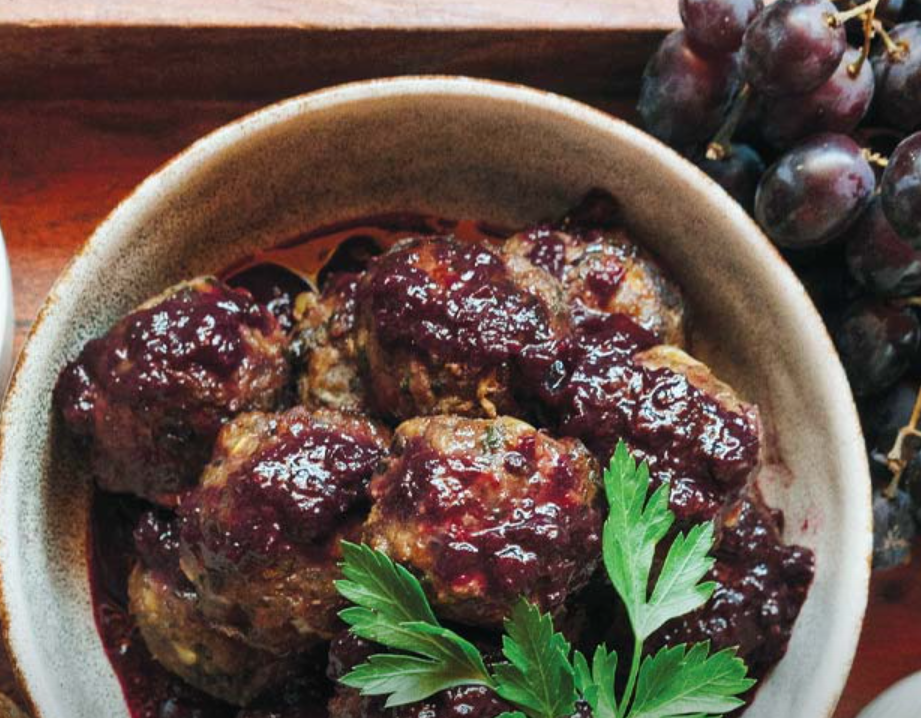 Bison Meatballs with Red Wine and Cherry Reduction
Bison Meatballs with Red Wine and Cherry Reduction Grilled Venison with Goat Cheese, Bacon and Blackberry Sauce
Grilled Venison with Goat Cheese, Bacon and Blackberry Sauce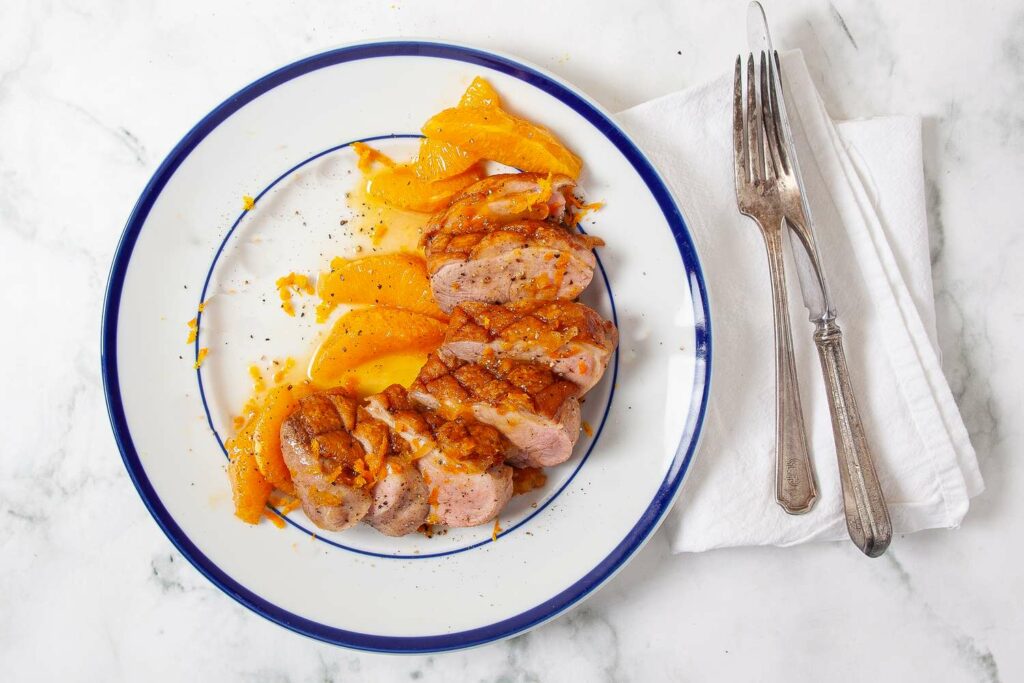 Sautéed Duck Breasts with Orange Soy Marinade
Sautéed Duck Breasts with Orange Soy Marinade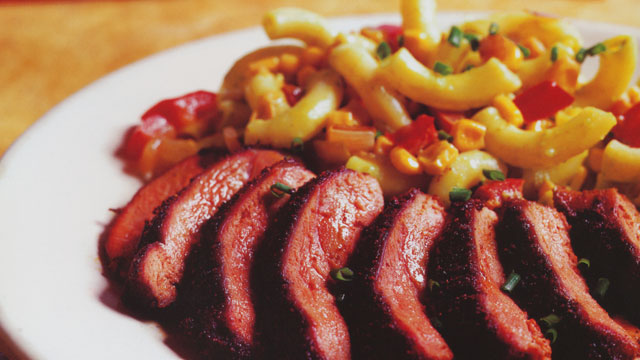 Sugar and Chile Cured Duck
Sugar and Chile Cured Duck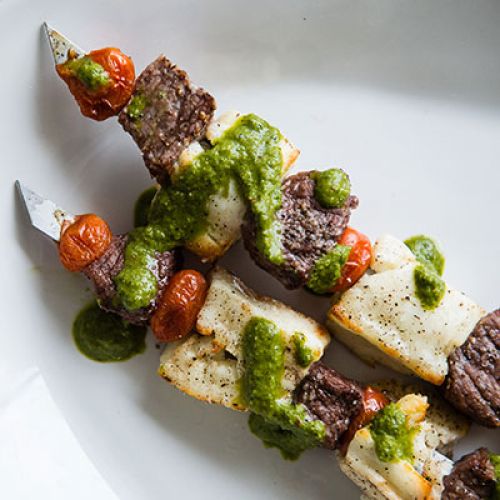 Grilled Halloumi and Lamb Skewers with Greek Chimichurri
Grilled Halloumi and Lamb Skewers with Greek Chimichurri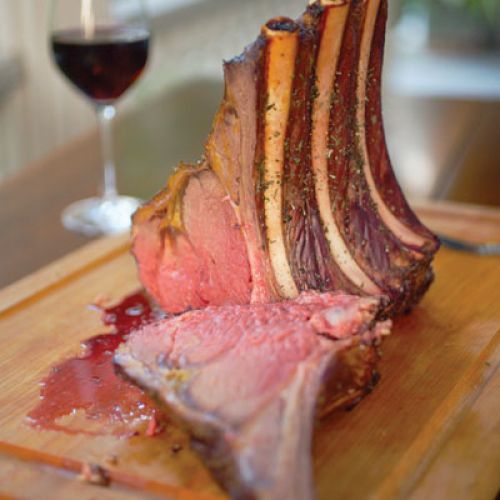 Standing Rib Roast of Bison with Herbs
Standing Rib Roast of Bison with Herbs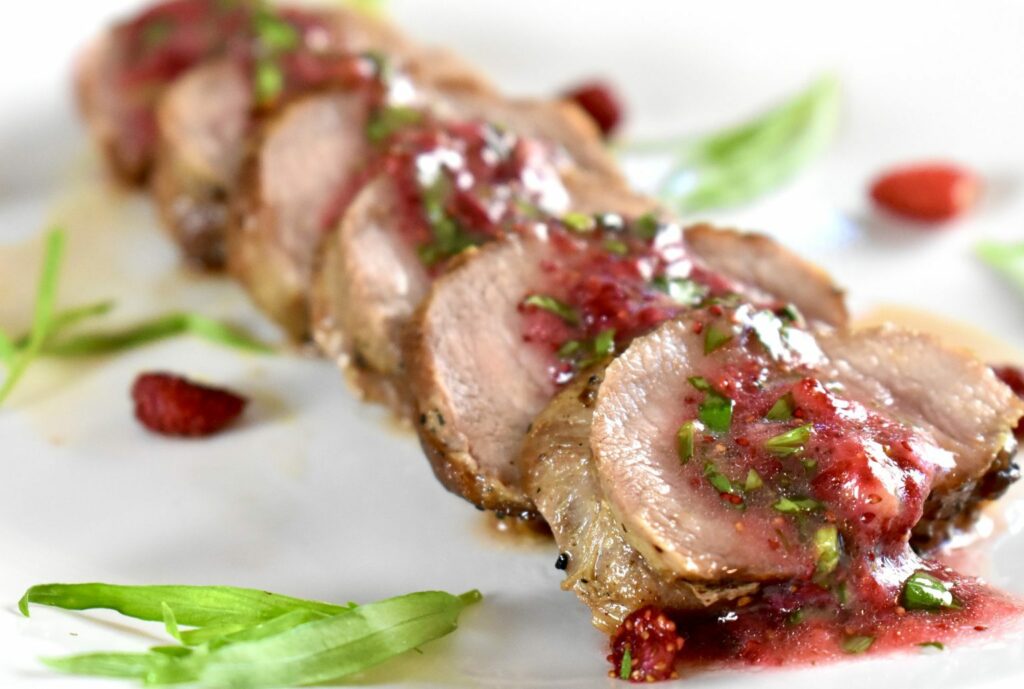 Wild Pork Loin with Wild Strawberry Tarragon Vinaigrette
Wild Pork Loin with Wild Strawberry Tarragon Vinaigrette Meatballs with Pine Nuts and Summer Savory
Meatballs with Pine Nuts and Summer Savory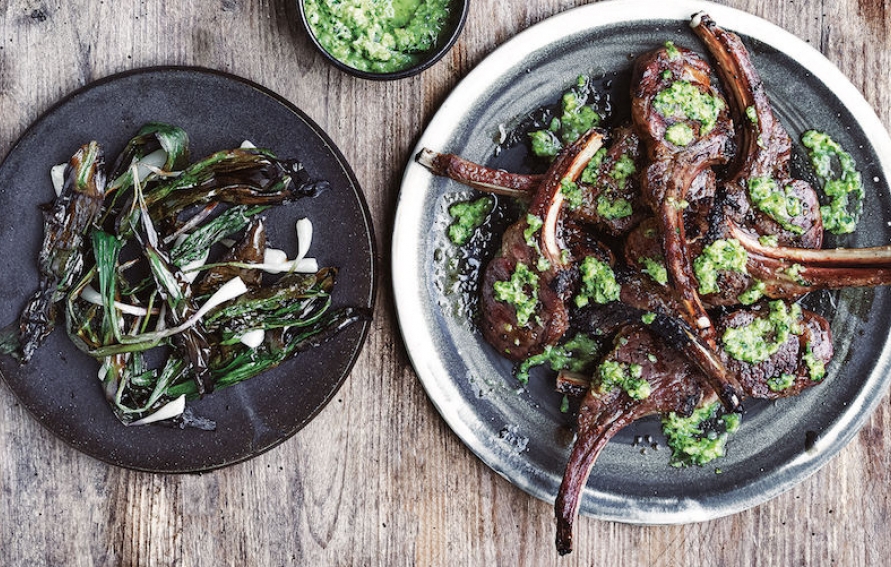 Lamb Chops with Lovage and Ramps
Lamb Chops with Lovage and Ramps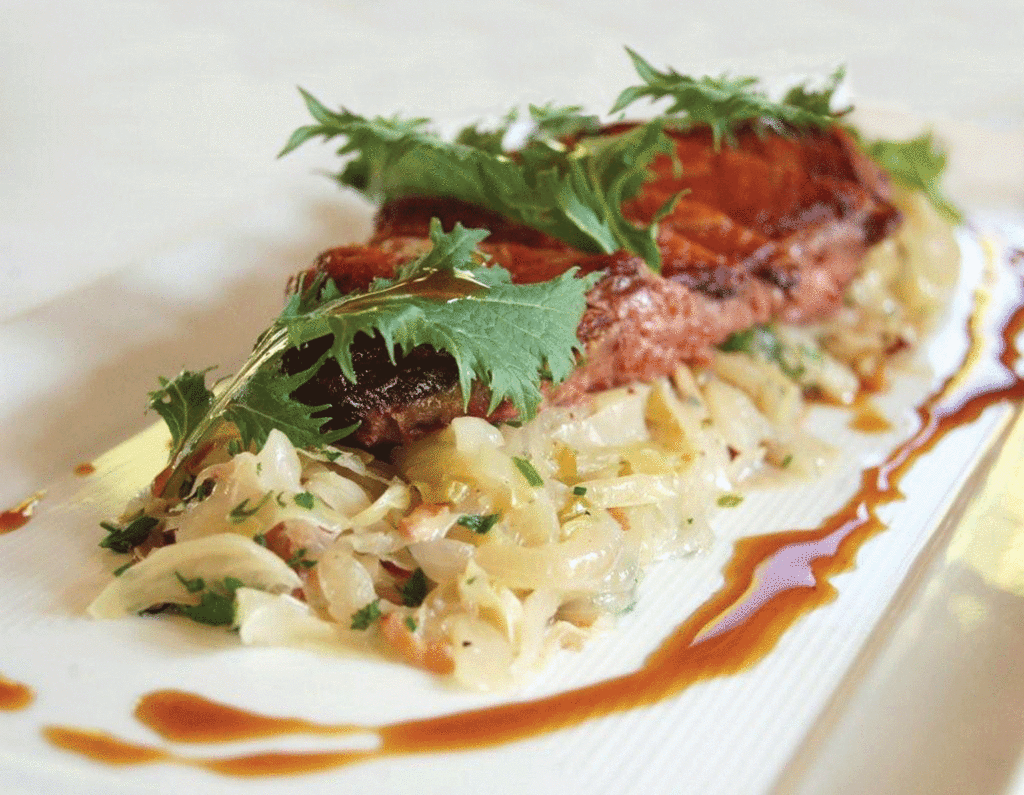 Duck Breast with Braised Cabbage
Duck Breast with Braised Cabbage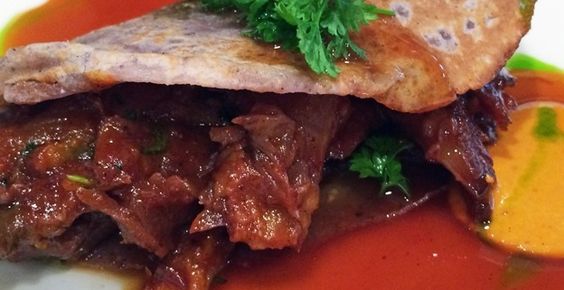
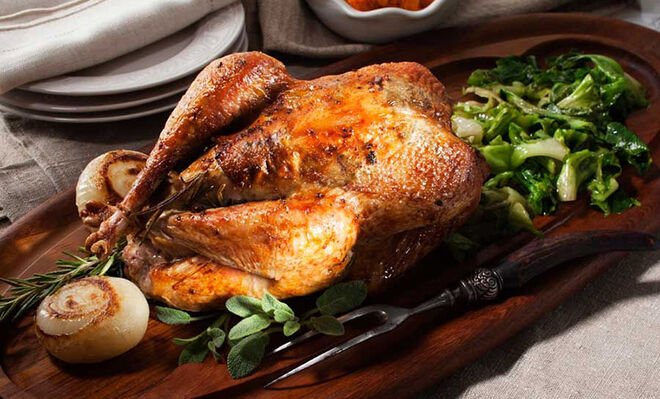
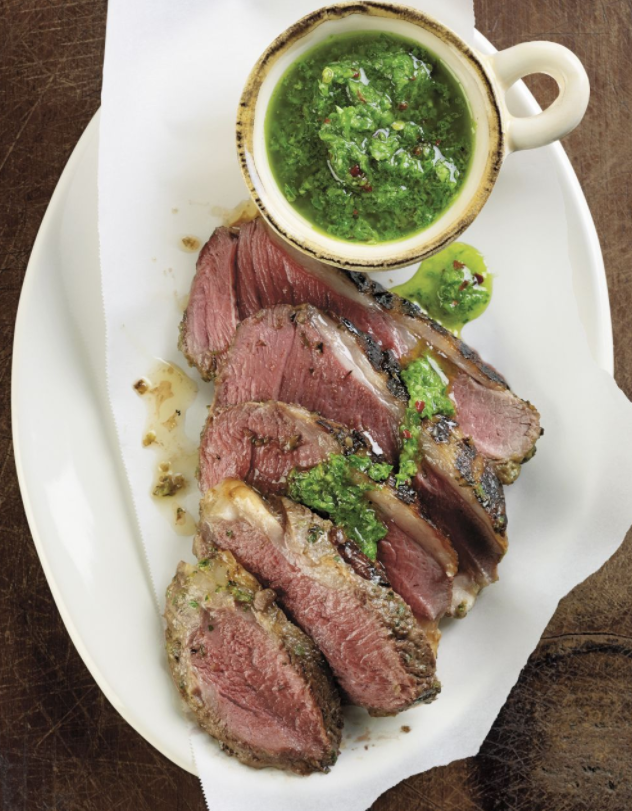 Brazilian Style Butterflied Leg of Lamb with Chimichurri
Brazilian Style Butterflied Leg of Lamb with Chimichurri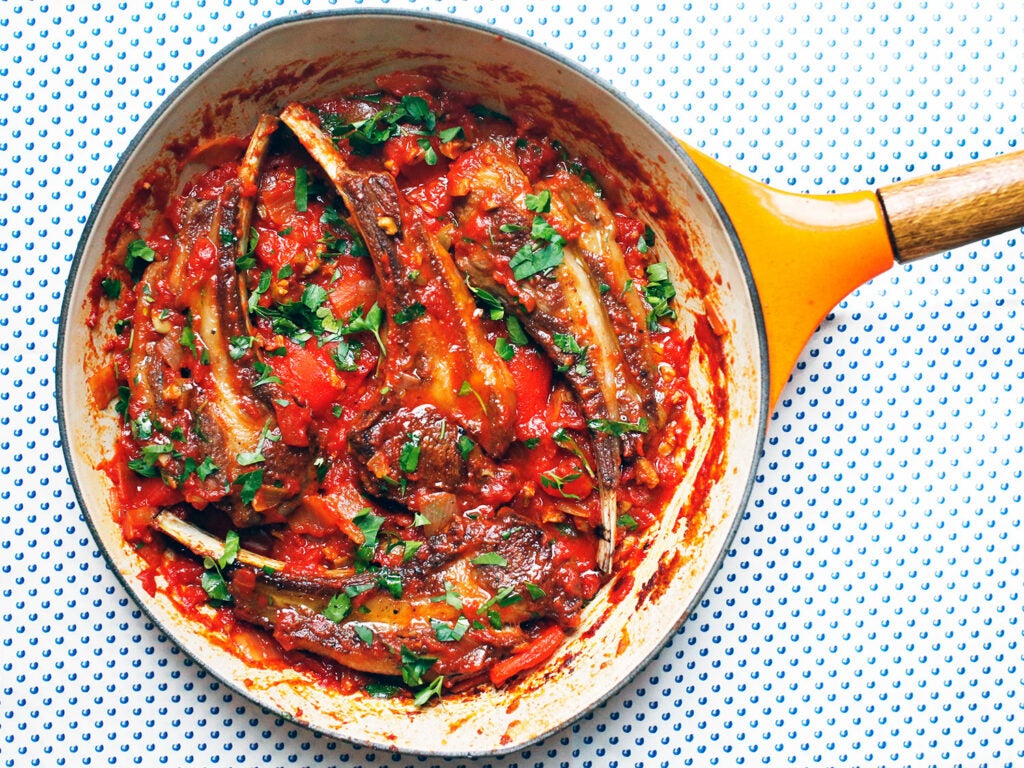 Calabrian Lamb Chops with Tomatoes, Peppers, and Olives (Costolette d’Agnello alla Calabrese)
Calabrian Lamb Chops with Tomatoes, Peppers, and Olives (Costolette d’Agnello alla Calabrese)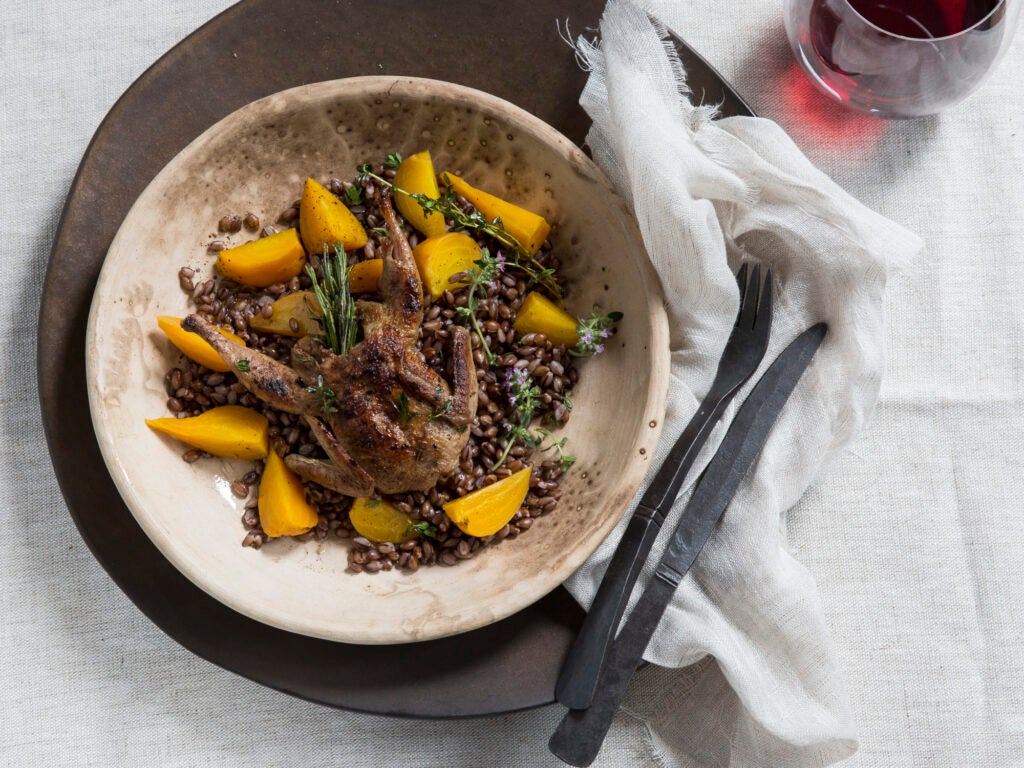
 Port Braised Lamb Shanks
Port Braised Lamb Shanks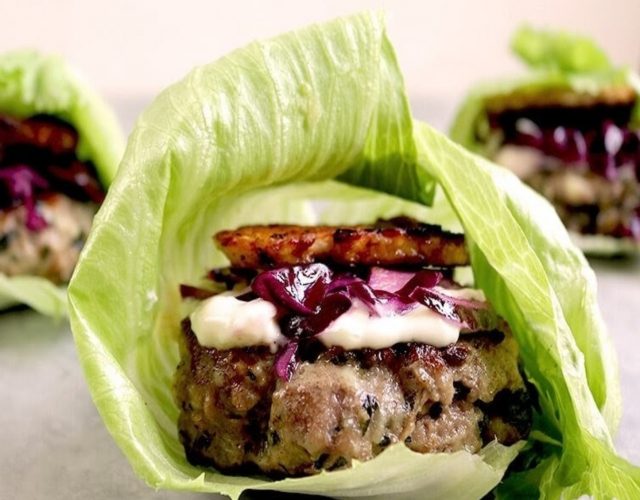 Lamb and Halloumi Burgers
Lamb and Halloumi Burgers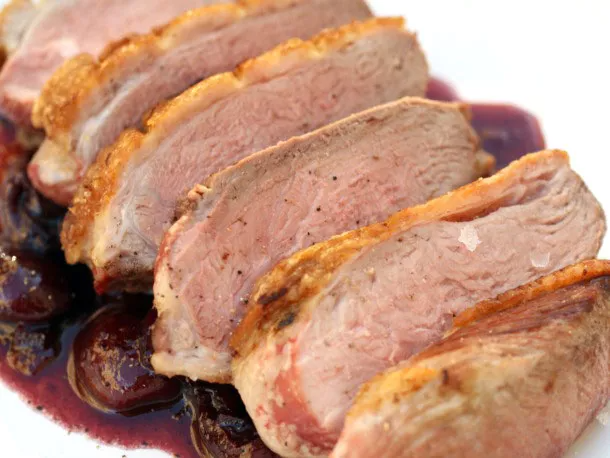 Sweet-Tart Duck Breasts with Fresh Cherry Sauce
Sweet-Tart Duck Breasts with Fresh Cherry Sauce Warm Duck and Grilled Apple Salad
Warm Duck and Grilled Apple Salad
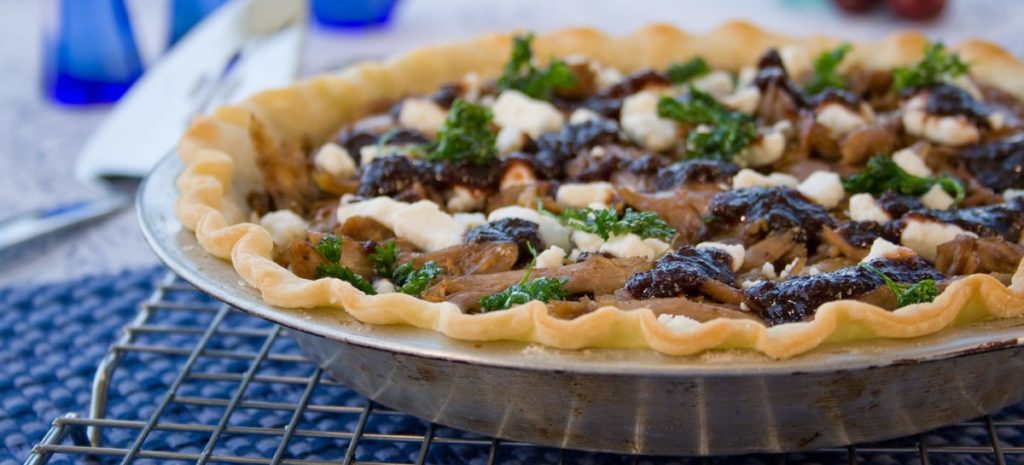
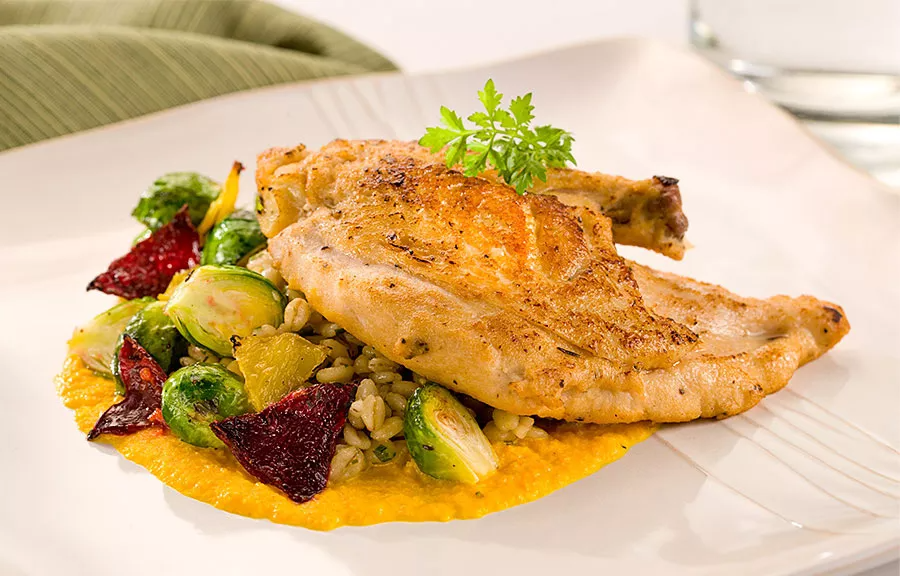 Roast Pheasant
Roast Pheasant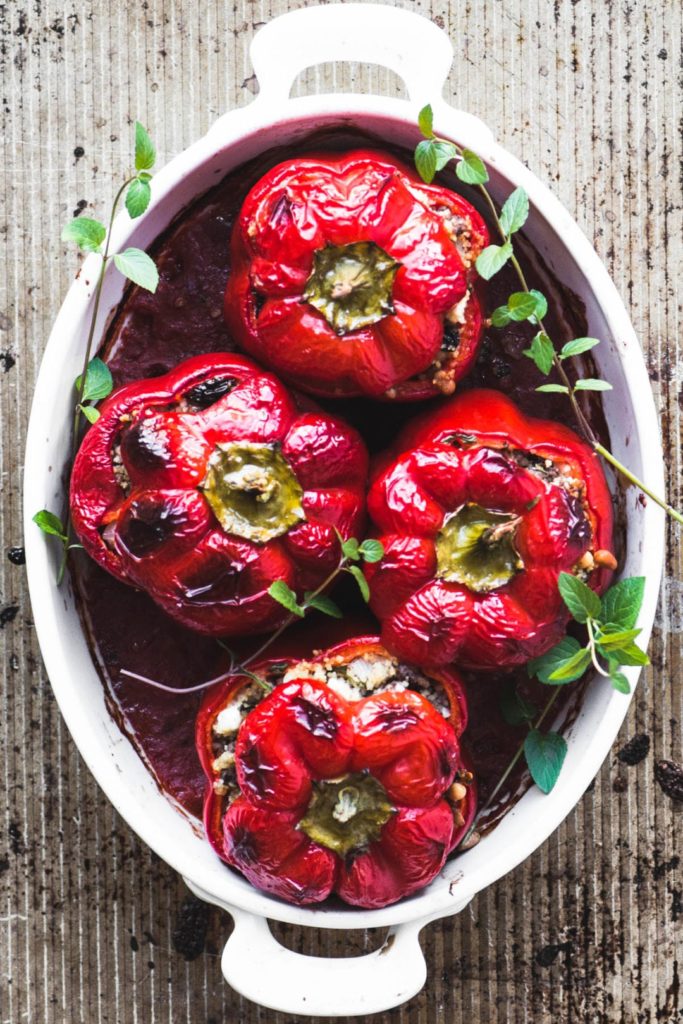
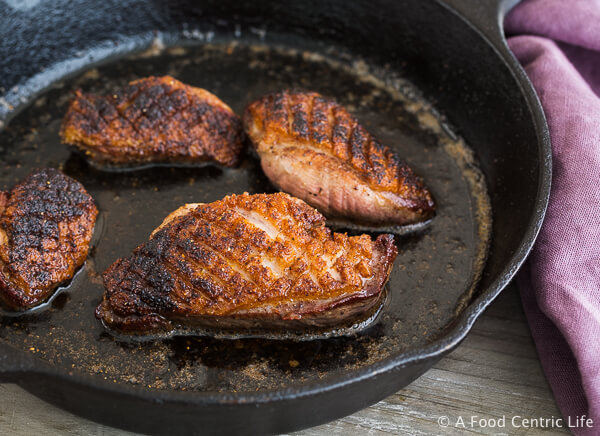
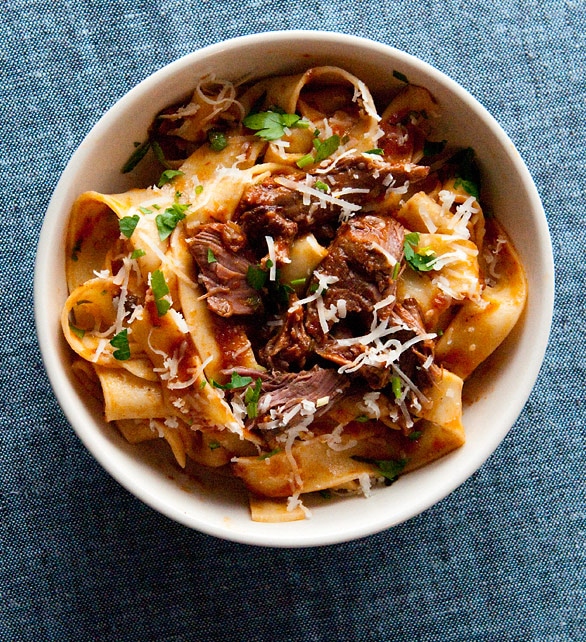
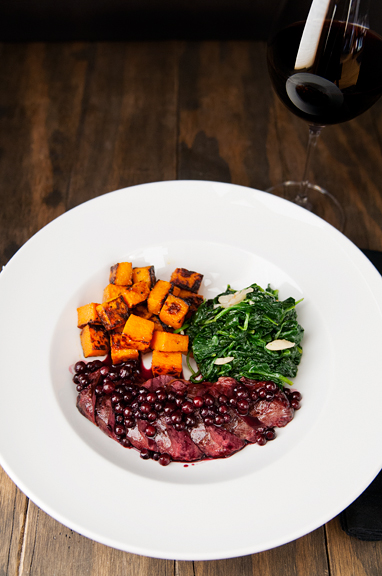 Seared Duck Breast with Huckleberry Gastrique
Seared Duck Breast with Huckleberry Gastrique